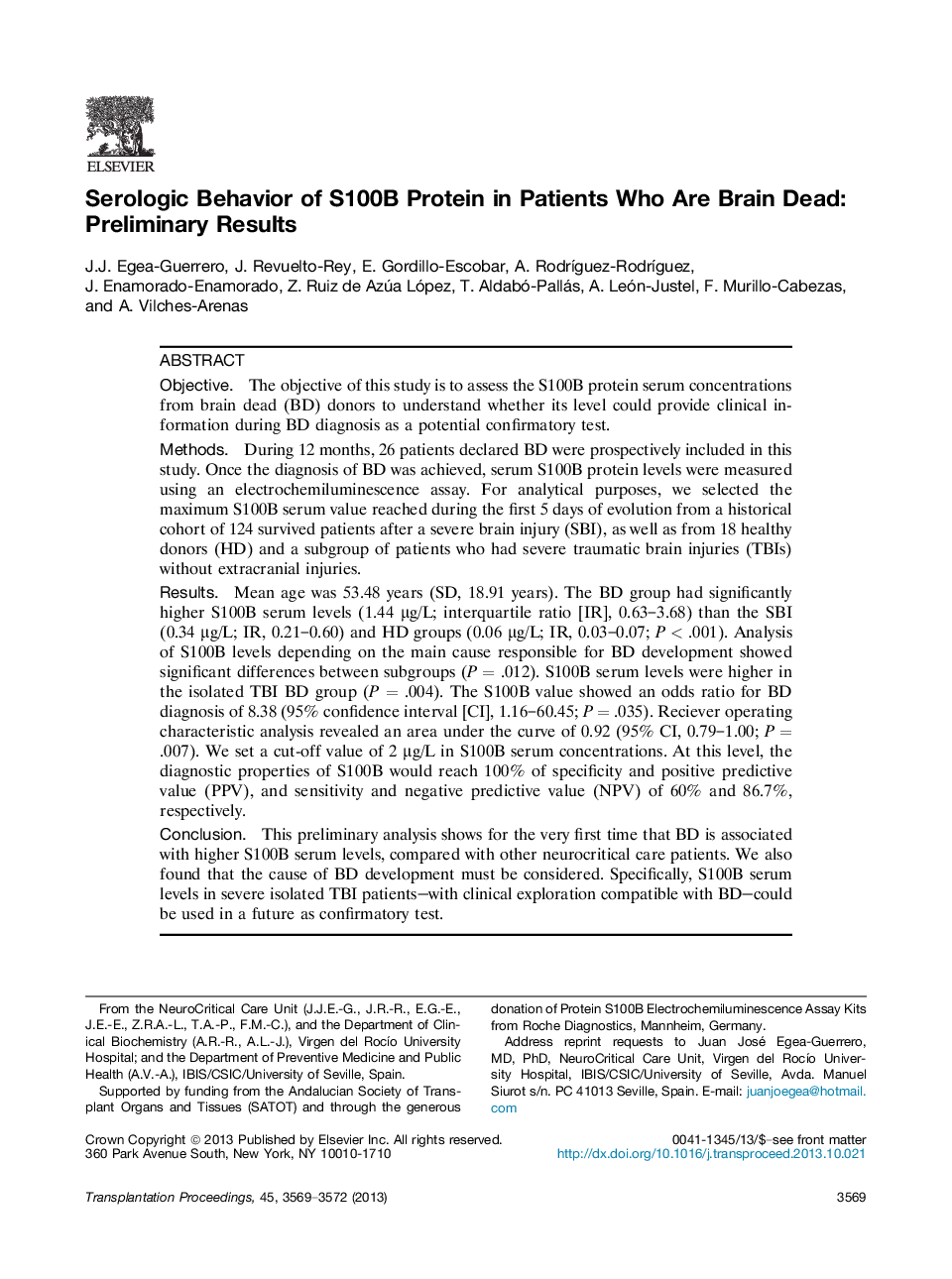| Article ID | Journal | Published Year | Pages | File Type |
|---|---|---|---|---|
| 4256528 | Transplantation Proceedings | 2013 | 4 Pages |
ObjectiveThe objective of this study is to assess the S100B protein serum concentrations from brain dead (BD) donors to understand whether its level could provide clinical information during BD diagnosis as a potential confirmatory test.MethodsDuring 12 months, 26 patients declared BD were prospectively included in this study. Once the diagnosis of BD was achieved, serum S100B protein levels were measured using an electrochemiluminescence assay. For analytical purposes, we selected the maximum S100B serum value reached during the first 5 days of evolution from a historical cohort of 124 survived patients after a severe brain injury (SBI), as well as from 18 healthy donors (HD) and a subgroup of patients who had severe traumatic brain injuries (TBIs) without extracranial injuries.ResultsMean age was 53.48 years (SD, 18.91 years). The BD group had significantly higher S100B serum levels (1.44 μg/L; interquartile ratio [IR], 0.63–3.68) than the SBI (0.34 μg/L; IR, 0.21–0.60) and HD groups (0.06 μg/L; IR, 0.03–0.07; P < .001). Analysis of S100B levels depending on the main cause responsible for BD development showed significant differences between subgroups (P = .012). S100B serum levels were higher in the isolated TBI BD group (P = .004). The S100B value showed an odds ratio for BD diagnosis of 8.38 (95% confidence interval [CI], 1.16–60.45; P = .035). Reciever operating characteristic analysis revealed an area under the curve of 0.92 (95% CI, 0.79–1.00; P = .007). We set a cut-off value of 2 μg/L in S100B serum concentrations. At this level, the diagnostic properties of S100B would reach 100% of specificity and positive predictive value (PPV), and sensitivity and negative predictive value (NPV) of 60% and 86.7%, respectively.ConclusionThis preliminary analysis shows for the very first time that BD is associated with higher S100B serum levels, compared with other neurocritical care patients. We also found that the cause of BD development must be considered. Specifically, S100B serum levels in severe isolated TBI patients—with clinical exploration compatible with BD—could be used in a future as confirmatory test.
